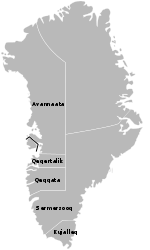Ammassalik was one of two municipalities in Tunu, the former county of East Greenland − the other one being Illoqqortoormiut. It was located in southeastern Greenland, and with an area of 232,100 km2, most of it on the ice sheet, it was the largest municipality of East Greenland. It is now mostly part of the new Sermersooq municipality, except for the uninhabited area from Timmiarmiut southwards, which is part of the new Kujalleq municipality. The population was 3,031 on 1 January 2005. Due to its size, the old municipality bordered more municipalities than any other in Greenland (10):

Ittoqqortoormiit, formerly known as Scoresbysund, is a settlement in the Sermersooq municipality in eastern Greenland. Its population was 345 as of 2020 and has been described as one of the most remote settlements on earth.

Kulusuk Airport is an airport in Kulusuk, a settlement on an island of the same name off the shore of the North Atlantic in the Sermersooq municipality in southeastern Greenland.
Kuummiit is a settlement in the Sermersooq municipality in southeastern Greenland. Founded in 1915, it had 248 inhabitants in 2020.
Isertoq is a settlement in the Sermersooq municipality, in southeastern Greenland. Its population was 64 in 2020.
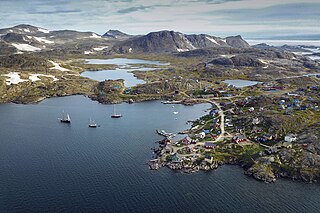
Kulusuk, formerly Kap Dan, is a settlement in the Sermersooq municipality in southeastern Greenland, located on an island of the same name. The settlement population of 241 includes many Danes choosing to live there due to the airport. In the Kalaallisut language, the name of the village means "Chest of a Black Guillemot".
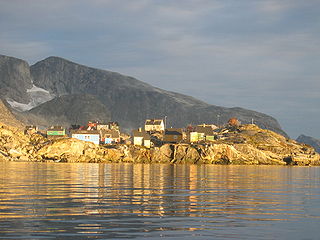
Sermiligaaq is a settlement in the Sermersooq municipality in southeastern Greenland. It is located near the Sermilik Fjord. Its population was 209 in 2020. In Kalaallisut, its name means "Beautiful Glacierfjord".
Ikkatteq was a small village in the Sermersooq municipality in southeastern Greenland. It was abandoned in 2005.

Sermersooq is a municipality in Greenland, formed on 1 January 2009 from five earlier, smaller municipalities. Its administrative seat is the city of Nuuk, the capital of Greenland, and it is the most populous municipality in the country, with 23,123 inhabitants as of January 2020.

Ammassalik Fjord is a 41 km (25.5 mi) long fjord in the Sermersooq municipality in southeastern Greenland.

Ammassalik Island is an island in the Sermersooq municipality in southeastern Greenland, with an area of 772 km2 (298.1 sq mi).

Tasiilaq Heliport or Ammassalik Heliport is a heliport in Tasiilaq, a town located on the Ammassalik Island in the Sermersooq municipality, in southeastern Greenland. Until 1997 the heliport was known as Ammassalik Heliport and is still listed by the Danish authorities under that name.
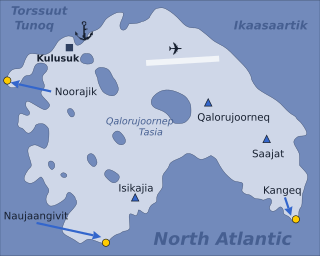
Kulusuk Island is an island in the Sermersooq municipality on the southeastern shore of Greenland. It is an outlying island in the Ammassalik archipelago of islands on the coast of the North Atlantic. The island is home to Kulusuk, the fourth-largest settlement on the entire eastern coast of Greenland. The island has an area of 41.98 km2, and measures 8 km (5.0 mi) from north to south and 11 km (6.8 mi) from west to east. The Kulusuk Airport on the island is one of the two airports on the entire eastern Greenland coast.
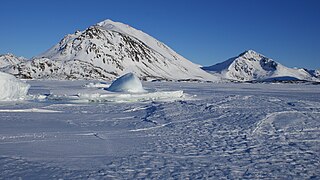
Apusiaajik Island is an uninhabited island in the Sermersooq municipality on the southeastern shore of Greenland. It is an outlying island in the Ammassalik archipelago of islands on the coast of the North Atlantic.

Torsuut Tunoq is a sound on the southeastern coast of Greenland. It is an inner waterway of the North Atlantic.
Qeertartivatsiaq Island is an uninhabited island in the Sermersooq municipality in southeastern Greenland.

King Christian IX Land is a coastal area of Southeastern Greenland in Sermersooq Municipality fronting the Denmark Strait and extending through the Arctic Circle from 65°N to 70°N.
Kitak is an island in the Sermersooq municipality in southeastern Greenland.

Sermilik is a fjord in eastern Greenland. It is part of the Sermersooq municipality.
















